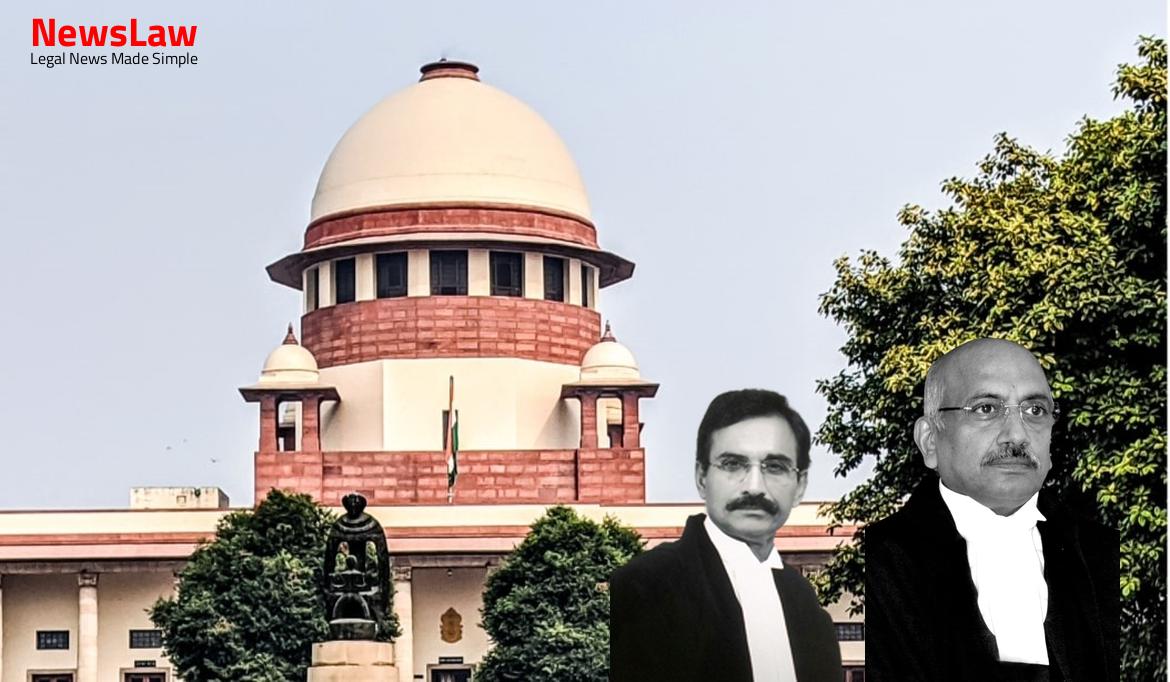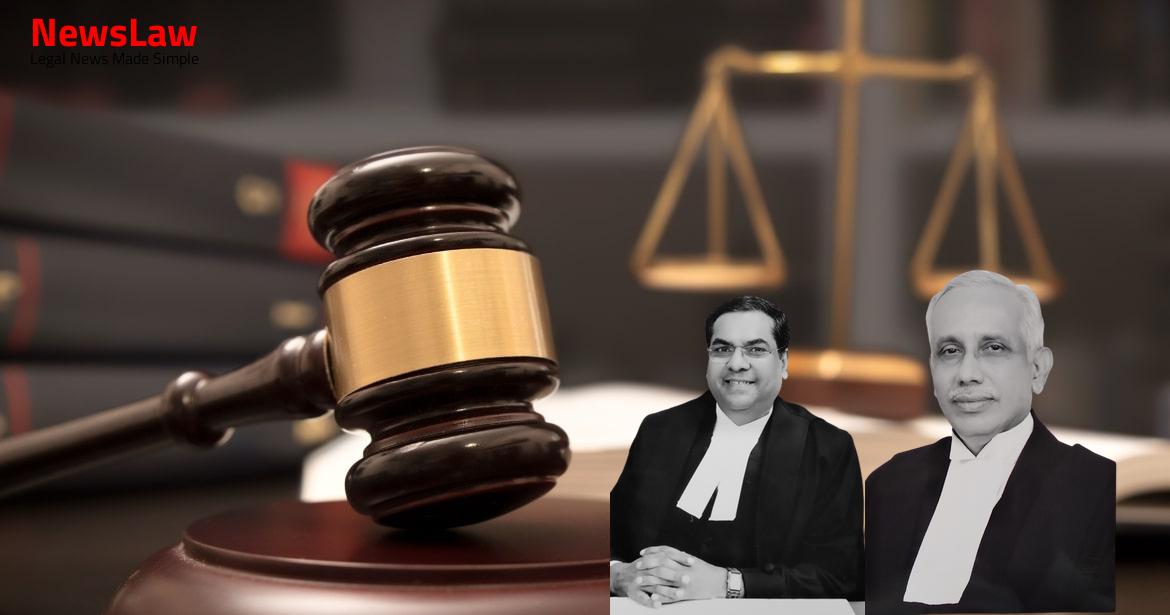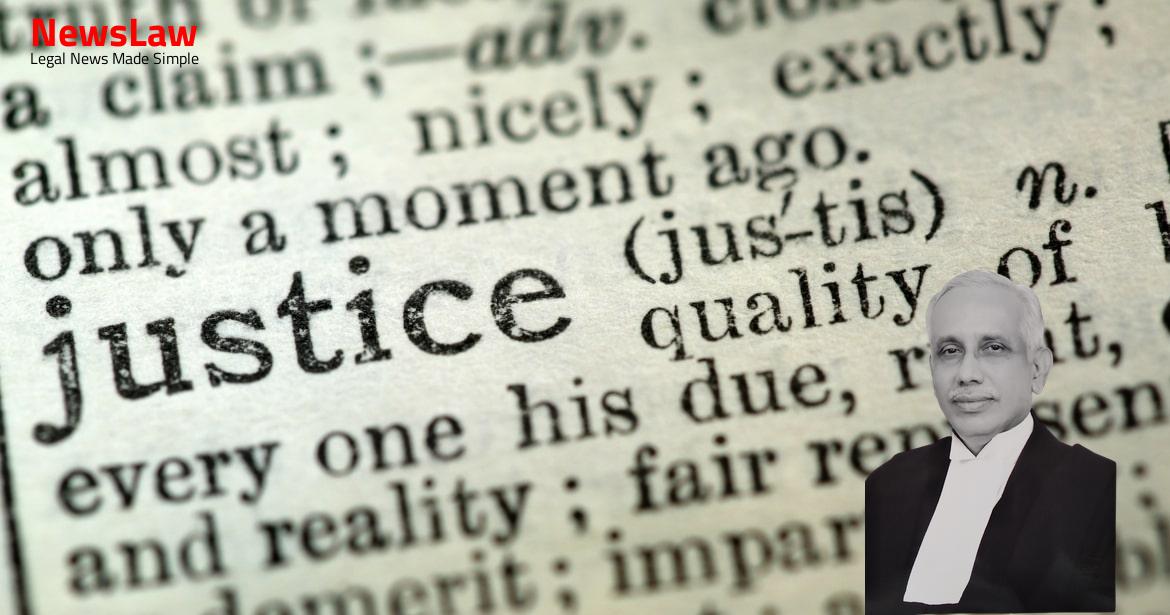In a landmark decision by the Supreme Court of India, the conviction of Accused No. 1, 11, and 15 has been upheld. This case, which involved incidents leading to the unfortunate demise of Chinnaperiaiyah and injuries to several witnesses including Irulandi and Ramar, saw justice served as the Court confirmed the guilty verdict. The judgment underscores the importance of upholding the rule of law and seeking justice for the victims involved. Read on to learn more about this significant legal ruling.
Facts
- FIR lodged based on complaint by Ramar (PW-2), brother-in-law of Baskaran (PW-4)
- Baskaran (PW-4) bought goats worth Rs.12,000 from the deceased and promised to pay after 20 days
- Deceased Chinnaperiaiyah stayed at Ramar’s (PW-2) house as Baskaran promised to pay money next day
- Accused armed with weapons surrounded Irulandi (PW-1), Ramar (PW-2) and the deceased Chinnaperiaiyah on April 26, 2003
- Thalaiyaripandi (A-11) instigated other accused to attack the deceased leading to injuries
- Accused attacked deceased with aruvals, and others including Irulandi (PW-1) and Ramar (PW-2) were also injured
- Irulandi (PW-1) and Ramar (PW-2) went to Veeracholan Police Station on April 26, 2003
- 18 witnesses including Dr. Jayakumar (PW-13), Irulandi (PW-1), Ramar (PW-2), Baskaran (PW-4), and Rathi (PW-5) examined
- Accused No. 1, 11, and 15 are part of the surviving appeal before the court
- Final judgment convicted A-1, A-9, A-10, A-11, A-12 and A-15 for various offences under IPC
- Accused who completed their sentence and Accused who died mention was also noted
- Baskaran’s (PW-4) wife was also attacked by accused while returning from the police station
- Deceased Chinnaperiaiyah was attacked by men of Thalaiyaripandi (A-11) while returning from the police station
- The High Court confirmed the sentence imposed, except for Poovalingam (A-6) who was convicted under Section 324 IPC and sentenced to one year rigorous imprisonment.
- The order of conviction and sentence was maintained based on the testimony of injured witnesses Irulandi (PW-1) and Ramar (PW-2), as well as the evidence of Baskaran (PW-4) and Rathi (PW-5).
- There were two incidents mentioned, one on April 8, 2003.
- The order of conviction was passed based on the evidence presented.
Also Read: Supreme Court Ruling on Dowry Harassment and Suicide Case
Arguments
- All prosecution witnesses are considered interested witnesses and their testimony is questioned.
- Incidents on April 26, 2003, resulted in injuries to Rathi (PW-5) and the deceased Chinnaperiaiyah, as well as to Irulandi (PW-1) and Ramar (PW-2)
- Argument raised that injured witnesses, Irulandi (PW-1) and Ramar (PW-2), were introduced by the prosecution and did not sustain injuries as claimed by the prosecution
- The injuries on these witnesses are said to be simple and not conclusively proven to be inflicted by the accused.
- The contention that the statements of material witnesses Irulandi (PW-1) and Ramar (PW-2) are contradictory and therefore cannot be relied upon without corroboration.
- Reference to the judgment in Ram Laxman v. State of Rajasthan to argue against granting benefit to some co-accused while maintaining conviction of others in a case where all accused are on the same footing.
- Citing Najabhai Desurbhai Wagh v. Valerabhai Deganbhai Vagh & Ors. to emphasize the prosecution’s failure to prove common object for murder based on the evidence presented.
- Mention of the case of Mahendran v. State of Tamil Nadu to highlight the need for caution in examining the statements of witnesses when part of their statement is not found to be truthful.
- Finding no merit in the present appeal after hearing arguments from both sides.
Also Read: Case of Technical Equipment Officer Appointment Criteria Dispute
Analysis
- Chinnaperiaiyah died at the spot due to injuries sustained during the assault by the accused.
- The cumulative effect of the evidence led by the prosecution determines whether the unlawful assembly had a common object to commit culpable homicide amounting to murder.
- The well-established principle ‘falsus in uno, falsus in omnibus’ is not a rule of law in India, and the entire testimony of witnesses cannot be rejected even if some parts are unproved.
- The High Court’s judgment of conviction and sentence is upheld, and the appeal is dismissed.
- The appellants are granted three months to surrender before the competent court.
- The medical evidence corroborates the oral testimony of witnesses Irulandi (PW-1) and Ramar (PW-2) regarding the injuries sustained.
- The motive for the attack on the deceased is established through incidents on April 8, 2003.
- Contradictions in witness statements are attributed to perception and the passage of time, making the witnesses reliable.
- Specific details of the assault by each accused are provided, demonstrating the planned and violent nature of the attack.
- The credibility of the witnesses, including Baskaran (PW-4), remains intact despite minor variations in their accounts.
- In Ram Laxman’s case, the Court found that the High Court disbelieved a witness in respect of one accused but believed the same witness in respect of another accused.
- In Najabhai Desurbhai Wagh case, the Court reviewed a judgment of acquittal by the High Court where the sentence was maintained against only one of the accused.
Also Read: Supreme Court Judgement on Transfer of Mining Environmental Clearances
Decision
- The judgments referred to are not applicable to the facts of the present case.
Case Title: POSTMAN VENGAISAMY Vs. THE STATE REP. BY INSPECTOR OF POLICE
Case Number: Crl.A. No.-001234-001234 / 2010



